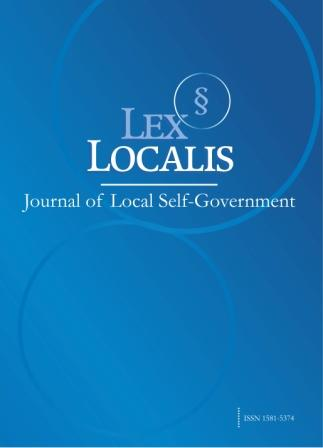Numerical simulation study on bed combustion of waste incinerator in the alpine region
DOI:
https://doi.org/10.52152/800071Keywords:
Alpine region. Waste incinerator. Bed combustion. Numerical simulation.Abstract
To optimize the layer combustion effect of the waste incinerator in the alpine region, the numerical simulation of a 750t/d waste incinerator in the alpine region in the three northeastern provinces of China was conducted based on the FLIC software. The simulation results show that the combustion process of waste can be roughly divided into three stages along the grate's movement direction: which are the water evaporation stage from 0m to 8.8m, the volatile emission and combustion stage from 2m to 10m, and the fixed carbon ignition and burnout stage from 2.1m to the grate's outlet. Due to the high moisture content of the waste in the three eastern provinces, the bed's height significantly decreases after the water evaporation. Because the ignition position of the fixed carbon is behind, the combustion rate of the fixed carbon is low. The primary air temperature can be appropriately increased, and the primary air distribution ratio can be optimized. In order to improve the combustion efficiency, it is recommended that the drying section provides 10 % of the total primary air volume, the volatile emission and fixed carbon combustion section provides 70 % of the total primary air volume, and the fixed carbon burnout section provides 20 % of the total primary air volume. In order to solve the problem of low fuel temperature at the grate's inlet, the direct air preheater should be used to preheat the waste before it enters the furnace to advance the ignition position of the fixed carbon and improve the burnout rate of the waste. Adjusting the angle of the front and rear arches to enhance the furnace's radiation intensity and ignition effect is recommended to accelerate the combustion speed of the waste. It is suggested that the furnace be fully insulated to reduce the heat loss and improve combustion efficiency. According to the simulation results, an optimization strategy is proposed for the operation and structure of the incinerator to achieve the purpose of optimizing combustion.
References
Xiaobo Wang, Anqi Liu, Huiqiong Zhong, et al. Characteristics of municipal solid waste in some urban agglomeration in the past five years [J]. Environmental Science, 2023, 44(11): 6421-6432.
Yantao Wang, Yang Cao. Analysis on garbage caloric value in MSW incineration power plant in China [J]. Environmental Sanitation Engineering, 2019, 27(05): 41-44.
Yang Y B, Goh Y R, Zakaria R, et al. Mathematical modelling of MSW incineration on a travelling bed [J]. Waste Management, 2002, 22(4): 369-380.
Yang Y B, Goodfellow J, Ward D, et al. Cutting wastes from municipal solid waste incinerator plants [J]. Process Safety and Environmental Protection, 2003, 81(B3): 143-155.
Yang Y B, Yamauchi H, Nasserzadeh V, et al. Effects of fuel devolatilisation on the combustion of wood chips and incineration of simulated municipal solid wastes in a packed bed [J]. Fuel, 2003, 82(18): 2205-2221.
Xiaoqian Ma, Guohui Liu, Zhaosheng Yu. Combustion optimization of municipal solid waste incinerator based on CFD [J]. Journal of South China University of Technology (Natural Science Edition), 2008, (02): 101-106.
Zhaozhou Qu. Numerical simulation of waste incinerator chamber under low atmospheric pressure with gas combustion [J]. Environmental Sanitation Engineering, 2017, 25(05): 84-87.
Zhichen Zhang, Hejiang Sun, Degang Ma. Simulation and optimization of combustion process of the MSW incinerator in Lhasa [J]. Environmental Sanitation Engineering, 2023, 31(04): 35-40.
Tao Lin, Yanfen Liao, Xucong Yan, et al. Structure optimization of 350t/d waste incinerator [J]. Journal of South China University of Technology (Natural Science Edition), 2021, 49(07): 116-124.
Xu Yang, Zhaosheng Yu, Yurong He, et al. Numerical simulation of municipal domestic waste blending with combustion of high calorific value industrial solid waste in waste incineration furnace [J]. Clean Coal Technology, 2023, 29(09): 98-108.
Wuqing Zeng, Yu Wang, Qingguo Bu, et al. Study of co-incineration characteristics of aged refuse and municipal solid waste [J]. Journal of Huazhong University of Science and Technology (Natural Science Edition), 2025, 53(01): 107-113.
Downloads
Published
Issue
Section
License
Copyright (c) 2025 Lex localis - Journal of Local Self-Government

This work is licensed under a Creative Commons Attribution-NonCommercial-NoDerivatives 4.0 International License.








